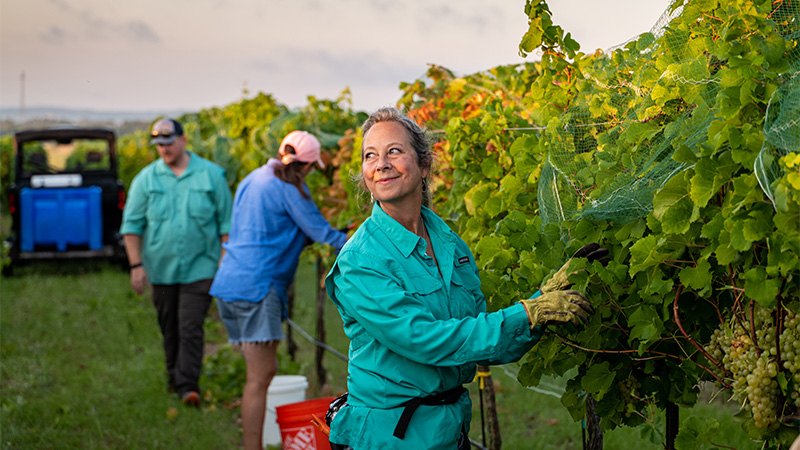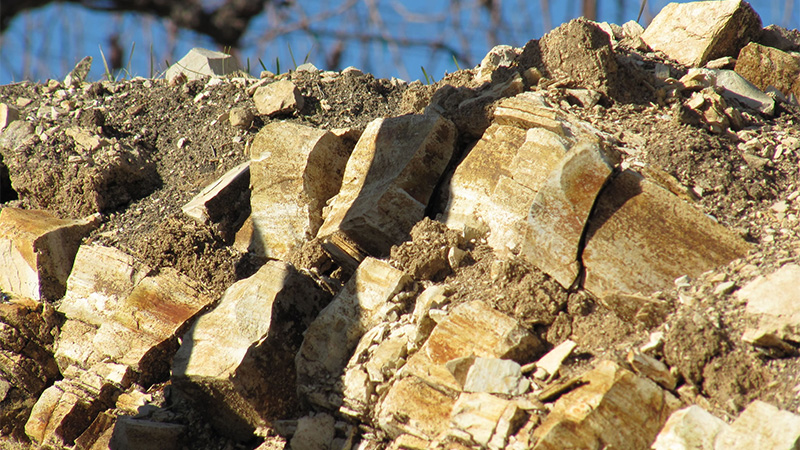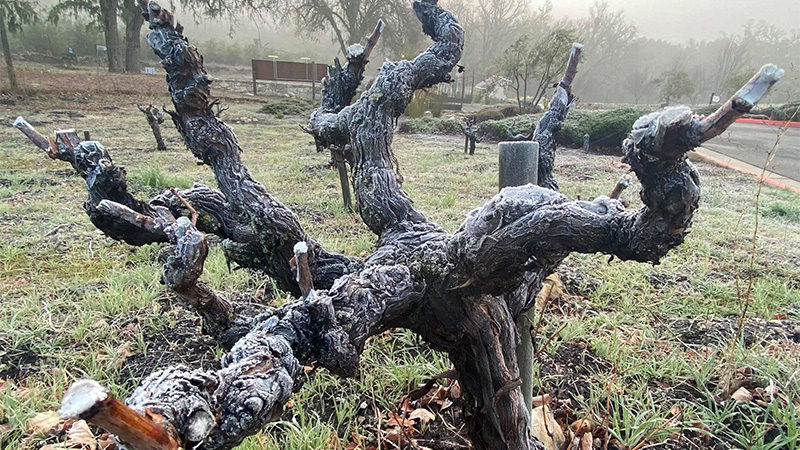The topic of wine and health has always been a tumultuous one, with claims circulating in both directions causing a mess of confusion. While the jury is still out on whether or not the glass of red wine a day prescribed by the Mediterranean diet is truly the secret to a long life, there are evolutionary reasons why some compounds in wine might contribute to healthy aging.
Wine’s supposed health benefits are often attributed to a family of compounds called polyphenols. Polyphenols — including specific compounds like phenolic acid, flavonoids, and anthocyanins — are the signaling molecules found in plants like grapes, berries, olives, and cocoa beans that have long linked these foods to health and wellness.
The narrative of plant polyphenols’ connection to wellness has been discussed for decades, but several questions that never seem to get addressed are: What roles do polyphenols play in wine grapes? Why do certain plants accumulate more polyphenols than others? And why would plant metabolites confer health benefits to us? Read on to take a deep dive into the connection between polyphenols and health, and how they impact the wine you drink.
Don’t Miss A Drop
Get the latest in beer, wine, and cocktail culture sent straight to your inbox.

Vine Stress
Like any living entity, vines have a set of optimal conditions in which they prefer to exist. Just as humans may be most comfortable wrapped in a blanket on the couch watching Netflix with a glass of Pinot Noir in hand, vines have their own set of standards. Each grape variety varies in its ideal levels of humidity, temperature, and rainfall, causing specific grapes to succeed in different climates around the world. However, there are certain environmental conditions that can wrench a vine out of its proverbial snuggie and cause a stress response. These factors include temperature swings, UV radiation, insufficient water, salinity, heavy metals, and disease.
Even though it may seem logical for vintners to avoid vine stress altogether, producers often inflict a moderate level of pressure on their crops. A tolerable level of vine stress has been shown to increase the intensity and concentration of its grapes and the wines made from them, motivating growers to occasionally seek out stressful situations. Some of the most prized regions in the world grow the best grapes in dry, sun-exposed environments with generally infertile soils.
“Depending on the phenological stage and the intensity of the stress factors on the vine, the composition or quality of the final wine is influenced positively or negatively. Moderate drought stress during the ripening phase increases the wine quality of heavy red wines, but white wine varieties react much more sensitively to the drought stress and therefore, the wine can be influenced negatively,” states Armin Gratl, managing director at Cantina Valle Isarco in Italy’s Alto Adige.
One of the most common methods of manipulating stress levels is through managing vines’ access to water. Viticulturist and vineyard manager Sherah Mills of Rustic Spur Vineyards and Kerrville Hills Winery in Texas practices deficit irrigation in years that don’t already exhibit drought conditions, and has found that this results in wonderfully balanced wines.
Neil Collins, the executive winemaker at Tablas Creek Vineyard in Paso Robles, Calif., mentioned that they don’t need to inflict stress on their vines because there’s “enough stress as it is, it needs no help from us,” referring to the region’s hot summers and cold winters as well as the vineyard’s heavy clay and calcareous rock soils. “But there’s the point: The site was purchased knowing it would give an amount of stress and hence wines of great character.”
One result of strategically inflicting stress is an increase in grapes’ polyphenol content, which has been frequently shown to improve the color, aroma, flavor, and overall quality of the wine.

The Role of Polyphenols
When a plant is threatened by environmental pressures, it launches a series of internal chemical pathways that mount a system-wide adaptive response. As viticulturist Sherah Mills states: “A vine’s typical response is survival. At the end of the day, we try to shape and mold the vine to meet commercial production practices and expectations, yet the vine’s instinct is strictly survival.”
One of the vine’s first responses to stress is an increased synthesis and accumulation of polyphenols. These compounds are known to act as antioxidants, protecting the plant from oxidative stress as well as influencing different physiological processes related to growth and development such as cell division, hormonal regulation, photosynthetic activity, and reproduction rate. Polyphenols are mobilized to regulate these pathways as a defense mechanism against environmental harm.
Therefore, when a vineyard experiences intense environmental stress, the vines ramp up polyphenol production to adapt and survive. Eventually, this can lead to an increase in polyphenols in the final wine produced by these grapes.

An Evolutionary Connection
So, why would humans benefit from these signaling molecules meant for plants? This phenomenon is summarized in the concept of xenohormesis, a biological principle that explains how plants undergoing environmental stress produce metabolites that can confer stress resistance to the animals that consume them.
Essentially, when we eat plants high in polyphenols, our bodies are adapted to interpret them as a message that there are currently stressors in our surrounding environment. When we ingest polyphenols, they trigger a system of signaling pathways, evoking a reaction. These responses can vary from a boost in metabolism to a decrease in inflammation, with the goal of preparing our body for the impending harmful conditions.
There is ongoing research to determine the impact of this signaling and its long-term effects, but developments over the past decade indicate that activation of these pathways contributes to fitness and longevity. Now, you would have to drink an epic amount of wine to continuously activate this response, but it is always interesting to explore our deep evolutionary connection with the plants around us — including grapes.
Moderate vine stress has long been used as a strategy to produce better-quality wines, and it just so happens that thanks to xenohormesis, it also leads to better-for-you wines. So when it comes to wine, let the vines stress out so you don’t have to.


